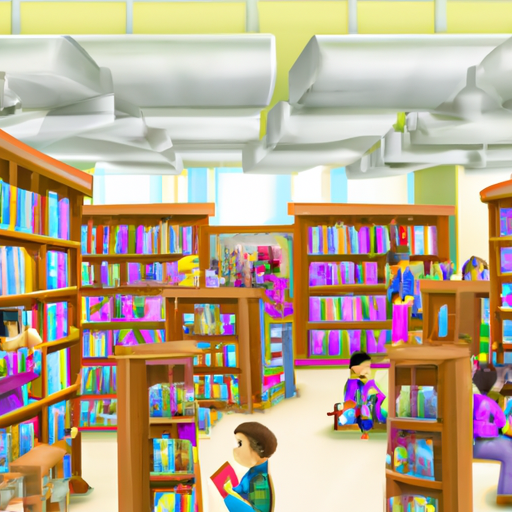
Considering the Right Factors for Your Family
When it comes to considering the right factors for your family when choosing the best school in Austin, there are a few key points that parents and families should keep in mind. First, a family should consider the academic offerings of the school. Do the school’s curriculum and extracurricular activities provide the best possible education for your child? Is there a wide variety of classes available to choose from, and will the school challenge your child academically and intellectually? Does the school offer advanced courses and honors classes?
Second, families should consider the atmosphere of the school. Is it a warm and welcoming environment? Are the teachers and staff friendly and supportive? Is there a sense of community among the students, and is there a wide range of diversity among the student body? Are there opportunities for parents and families to get involved in the school and in their child’s education?
Third, families should consider the school’s extracurricular activities. Does the school offer a wide variety of clubs and activities that will help to enrich your child’s educational experience? Are there sports teams, arts programs, academic teams, and other activities that your child can participate in? Are there opportunities for your child to build relationships with other students and gain valuable leadership skills?
Fourth, families should consider the quality of the facilities. Does the school have quality classrooms, libraries, and other learning spaces? Is the school up-to-date with the latest technology, and does it have access to the internet and other digital resources? Are there ample resources for students to use?
Fifth, families should consider the school’s safety and security features. Is there a safe environment for students to learn and to feel secure? Does the school have adequate security personnel and measures in place? Are there safety protocols in place for emergencies?
Finally, families should consider the cost of the school. Are there scholarships or grants available? Are there any costs associated with the school that would be out of the family’s budget? Are there payment plans or other financial aid options available?
Considering all of these factors can help you to determine which school is best suited for your family. It is important to remember that each family is unique, and that each school has its own strengths and weaknesses. Taking the time to research and consider each school carefully can ensure that you make the best decision for your child and your family.

Factors to Consider When Choosing a School
When it comes to choosing the best school for your family, there are many factors to consider. Austin, TX is home to some of the best schools in the nation, and the city offers a variety of educational opportunities for parents and families. Finding the right school for your child can be a daunting task, but it doesn’t have to be. In this guide, we will explore the important factors to consider when selecting a school in Austin.
First, consider your child’s academic needs. Does your child require special education services or have unique learning needs? It is important to find a school that can meet those needs and provide an environment where your child can thrive. Additionally, Austin schools offer a variety of curricula and extracurricular activities that can help your child develop a passion for learning. Consider the types of activities that are available at different schools and which ones might be the best fit for your child.
Second, take into account the school’s overall environment. Does the school have a nurturing and inclusive atmosphere that helps students feel safe and supported? It is important to find a school where your child will be surrounded by positive role models and a sense of community. Additionally, look into the school’s discipline policies and how they respond to issues of bullying and harassment.
Third, consider the school’s location and accessibility. Is the school located near your home or work, or is it a reasonable commute? Are there after-school programs available to your child? Does the school offer transportation to and from school if needed? These are all important factors to consider when evaluating the best school for your family.
Fourth, research the school’s faculty and staff. Do the teachers have the necessary qualifications to provide quality instruction? Are the school’s administrators and staff members friendly and approachable? Does the school have a strong parent-teacher relationship and offer meaningful opportunities for families to get involved?
Finally, consider the school’s extracurricular activities. Are there sports teams, clubs, or other activities that your child might be interested in? Does the school offer internships or mentorship programs that provide real-world experience? These are all great ways to ensure that your child has access to a well-rounded educational experience.
At the end of the day, the best school for your family is the one that meets your child’s needs and provides an environment where they can thrive. With some research and careful consideration, you can find the perfect school in Austin. We hope this guide provides you with the necessary information to find the best school for your family.

Exploring the Different Types of Schools
Austin is a great place to live and to raise a family. Not only does it offer a diverse and vibrant culture, but it also offers a plethora of educational opportunities for children. From traditional public schools to private institutions and magnet schools, there is something for everyone. In this blog post, we will explore the different types of schools available in Austin and the benefits that each type offers for parents and families.
Public schools are the most common type of school in Austin, and they are funded by the state. These schools provide a free education to all students and typically offer a wide range of classes and activities. Public schools also have a variety of extracurricular activities available, such as sports teams, music programs, and student clubs. In addition, many public schools offer specialized programs to meet the needs of their students, such as Gifted and Talented programs, English as a Second Language classes, and Advanced Placement courses.
Private schools are another popular option in Austin. These schools are funded by tuition and donations, and they typically provide a more customized education than public schools. Private schools offer smaller classrooms, more personalized instruction, and more rigorous academic standards. Private schools also often have a religious affiliation and require students to adhere to religious teachings and practices.
Magnet schools are a type of public school that offers specialized instruction in a particular area, such as the sciences, technology, or the arts. Magnet schools typically attract students from all over the city and are often highly competitive for admission. Magnet schools are a great option for students who are interested in pursuing a particular field or who are looking for a more specialized educational experience.
Charter schools are a type of public school that is independently run and receives public funds. Charter schools offer a unique and creative approach to education and typically have a focus on a specific subject, such as the arts or technology. Charter schools are often known for their innovative teaching methods and their commitment to providing a high-quality education to their students.
Finally, homeschooling is an increasingly popular option for families in Austin. Homeschooling allows parents to create a personalized educational experience for their children and to provide a more individualized approach to learning. Homeschooling is also a great way for students to explore their passions and to pursue their interests in a more self-directed manner.
In Austin, there are many different types of schools to choose from. Each type of school offers its own unique benefits, and it is important for parents and families to research each type before making a decision. With the right research and information, families can find a school that meets their individual needs and provides their children with the best possible educational experience.

Searching for the Right Fit for Your Child
When it comes to finding the right school for your child, there is no one-size-fits-all solution. Every child is unique, and no single school is perfect for them all. As a parent or guardian, it is important to research many different schools in order to find the perfect fit for your child.
The Austin area is home to a number of excellent schools, both public and private, so you’ll have plenty of options to choose from. Start by researching the different types of schools available, from traditional public schools to charter schools to private schools. Ask yourself whether your child would thrive in a smaller, more intimate learning environment or a larger school with more extracurricular activities.
When you’ve narrowed down your search to a few schools, it’s time to dive deeper. Talk to other parents and guardians and ask questions about the school’s curriculum, safety, after-school programs, and other important factors. You should also consider the school’s location, as it will be important to factor in the commute and after-school activities when making your decision.
Visit the schools in person and take a tour. This will give you the opportunity to meet the teachers and administration and get a feel for the school’s culture. Ask questions and observe classes, so you can get a better understanding of the learning environment.
Lastly, consider the feedback you get from your child. Ask them about their thoughts on the different schools and what kind of activities they’d like to participate in. It’s important to bring your child into the decision-making process, as this will help you find the right fit for them.
Finding the right school for your child can be a daunting task, but with research, careful consideration, and an open dialogue with your child, you can make the best decision for your family. With the right school, your child will be able to thrive and reach their full potential.

Researching School Ratings and Reviews
When it comes to finding the best school for your children, researching school ratings and reviews is an important step in the process. As a parent or family in Austin, you want to make sure that you are selecting the best school for your child – one that will provide them with the best education, safety, and environment.
When researching schools, there are a few key resources that you should consult. The first is the Texas Education Agency (TEA) website. This website provides a wealth of information about all of the public schools in Texas, including ratings and reviews. You can browse the ratings for schools in your area and compare them to other schools in the state. The TEA also provides information about school funding, student-teacher ratios, and other important information.
Another great resource is GreatSchools.org. This website provides detailed ratings and reviews for public and private schools in the Austin area. Parents can read the reviews from other parents who have had direct experience with the schools, as well as learn about the school’s academic performance and student body makeup. GreatSchools.org also provides information about extracurricular activities, school culture, and more.
Another resource to consider is Niche.com. This website provides ratings and reviews for schools in Austin, as well as student and parent surveys. You can get an in-depth look at a school’s strengths and weaknesses, and you can also read reviews of teachers and staff. Niche.com is also a great way to compare schools in the area, as it allows you to filter results by factors like student-teacher ratio, test scores, and more.
Finally, you can also look to the local news for school ratings and reviews. Austin has a number of newspapers, magazines, and websites that cover education in the area. These publications often have articles and reviews that can provide insight into a school’s academic performance, student body makeup, and safety.
By taking the time to research school ratings and reviews, you can make an informed decision about the best school for your child in Austin. Remember to consider a variety of resources, and look for schools that will provide a safe and supportive learning environment for your child.

Looking at Resources and Financial Aid Options
When looking for the best schools in Austin, parents and families should also consider how to pay for the education they wish to provide for their children. After all, a quality education shouldn’t be limited to those who can afford it. Fortunately, there are a variety of financial aid options and resources available to families in Austin that can help make the dream of a quality education a reality.
For starters, families should consider the Free Application for Federal Student Aid (FAFSA). This form is the gateway to a variety of financial aid programs, such as Pell Grants, work-study programs, and federal loans. Filling out this form is the first step for families in determining their eligibility for federal aid.
Families should also look for scholarships that may be available to their student. Scholarships can come from a variety of different organizations, including private businesses, local nonprofits, and community organizations. For example, the Austin Community Foundation offers a variety of scholarships to help students from low-income families pursue their educational goals.
Families should also research the different financial aid programs offered by the schools they’re considering. Many schools offer need-based grants and scholarships to help families who may not be able to afford the full cost of tuition. Additionally, some schools may offer additional aid to students with special circumstances, such as those in foster care, who have disabilities, or who are veterans.
Finally, parents and families should also consider private loans. A private loan is a type of loan that is issued by a bank or other financial institution to help finance a student’s education. These loans typically have a lower interest rate than federal loans, but they are often more difficult to qualify for. It’s important for families to research the different loan options to ensure they are getting the best deal for their student.
When looking for the best schools in Austin, parents and families should not just look at the school’s reputation and academic offerings. They should also consider the resources and financial aid options available to them. By researching the different forms of financial aid and the various scholarships available, families can make sure their student is able to receive a quality education regardless of their financial situation.

Exploring the Benefits of Private Schools
Parents seeking the best education for their children know that the school choice is one of the most important decisions they can make. Private schools in Austin offer a unique opportunity to explore the benefits of a private education. Private schools are often more intimate, with smaller class sizes and more individualized instruction than their public counterparts. Additionally, Austin private schools often have the resources and connections to provide a range of unique extracurricular activities and educational opportunities.
At private schools in Austin, students have the opportunity to explore their interests in a way that’s tailored to their individual needs. Whether it’s advanced classes, community service opportunities, or specialized extracurricular activities, private schools provide students with the chance to explore and develop their talents and passions. Furthermore, many private schools offer a range of specialized courses that may not be available in public schools. From foreign language classes to robotics and coding to advanced science courses, private schools can provide students with the chance to pursue their interests and discover their potential.
Private schools also provide a safe and supportive learning environment. With smaller class sizes and more individualized instruction, students can feel more comfortable and engaged in their studies. Teachers and staff at private schools often have the time and resources to provide additional support and guidance to students, allowing them to reach their full potential. Additionally, private schools often have a strong sense of community that encourages students to be actively engaged in their learning.
Finally, private schools in Austin are often more affordable than their public counterparts. Many private schools offer financial aid and scholarships to families who need assistance in paying for tuition. Additionally, some private schools offer tuition discounts for siblings and other family members, allowing families to take advantage of the unique educational opportunities that private schools provide.
Ultimately, the decision to send a child to a private school is one that should be made carefully and with consideration for the individual needs of the student. Private schools in Austin provide a unique opportunity for families to explore the benefits of a private education. From smaller class sizes and more individualized instruction to unique extracurricular activities and specialized courses, private schools offer a range of unique benefits. Additionally, private schools often have strong communities that nurture students while providing them with the tools they need to reach their full potential. With the right research and preparation, parents can make an informed decision that will benefit their children for years to come.

Comparing Public and Charter Schools
As a parent, it is important to consider all the options when it comes to your child’s education. When looking for the best schools in Austin, it is important to compare the various public and charter schools in the area. Public schools are operated by the local government and are funded by local, state and federal sources. Charter schools are privately operated and funded, but are still publicly funded.
When comparing public and charter schools, there are a few key differences that should be taken into consideration. Public schools offer a variety of programs and services and are managed by the local government. Public schools are typically larger and have larger student populations. Charter schools are typically smaller and have a more focused educational approach.
Public schools have a standard curriculum that is developed by the local government. This curriculum is typically more traditional, with an emphasis on core subjects such as math, science, literature, and history. Charter schools often have more specialized curriculums with an emphasis on unique and creative content.
Another difference between public and charter schools is the cost of tuition. Public schools are funded by the government and typically have lower tuition rates. Charter schools are often privately funded and the tuition costs can be higher. It is important to compare the tuition costs of different schools and make sure that the cost is within your budget.
Finally, when comparing public and charter schools, it is important to look at the extracurricular activities that are offered. Public schools typically offer a variety of activities such as sports, music, and theater. Charter schools often have a more limited selection of activities, but may offer unique activities such as robotics or coding.
When considering the best schools in Austin for your child, it is important to compare the various public and charter schools in the area. It is important to look at the curriculum, tuition costs, and extracurricular activities offered. By doing so, you can make an informed decision about which school is the best fit for your child’s needs.

Understanding the Different Types of Classroom Settings
Austin is a growing city and home to some of the best schools in the nation. As such, parents and families looking to enroll their children in the best schools in Austin, need to understand the different types of classroom settings available. This guide will provide an overview of the various types of classrooms and the benefits they offer.
The traditional classroom is the most common setting in which students learn. This setting is usually composed of desks arranged in rows and a blackboard at the front of the room. In this environment, students are instructed in one subject at a time, and the teacher is typically responsible for the overall instruction and learning of the students. The traditional classroom is ideal for students who need structure, discipline, and a sense of direction.
The Montessori classroom is a child-centered approach to education. It is based on the belief that children learn best when they can explore and discover their environment at their own pace. Montessori classrooms are typically arranged into learning centers with a variety of activities and materials that students can engage with. This type of classroom setting allows for more independent work, encourages critical thinking, and instills a sense of responsibility in the student.
The modern hybrid classroom is a combination of the traditional classroom and the Montessori approach. This setting has the structure of the traditional classroom while offering the flexibility of the Montessori classroom. In this type of classroom, the teacher is typically the main source of instruction, but there is also a focus on student-centered learning. As such, students are given more freedom to explore and engage with their environment at their own pace. The hybrid classroom is ideal for students who benefit from structure yet still need to be encouraged to think independently.
Another type of classroom is the virtual classroom. This setting is used for online instruction and typically involves a teacher and a group of students who are connected via the internet. Virtual classrooms are ideal for students who are not able to attend a traditional school or need more flexibility in their learning schedule. This type of classroom is also great for students who need to access educational materials or resources quickly.
Finally, the home school classroom is an educational setting in which the student learns in the home environment. This type of classroom setting allows for a more personalized approach to learning as parents are able to tailor instruction to their child’s individual needs. Home school classrooms also provide a safe and comfortable environment for the student to learn.
No matter which type of classroom setting you choose for your child, it’s important to ensure that it is a good fit for their learning style and needs. Each type of classroom setting has its own unique benefits and it’s important to research and understand the different options available to ensure that your child receives the best education possible. With a little research and understanding of the different types of classroom settings, parents and families in Austin can find the best school for their children.



